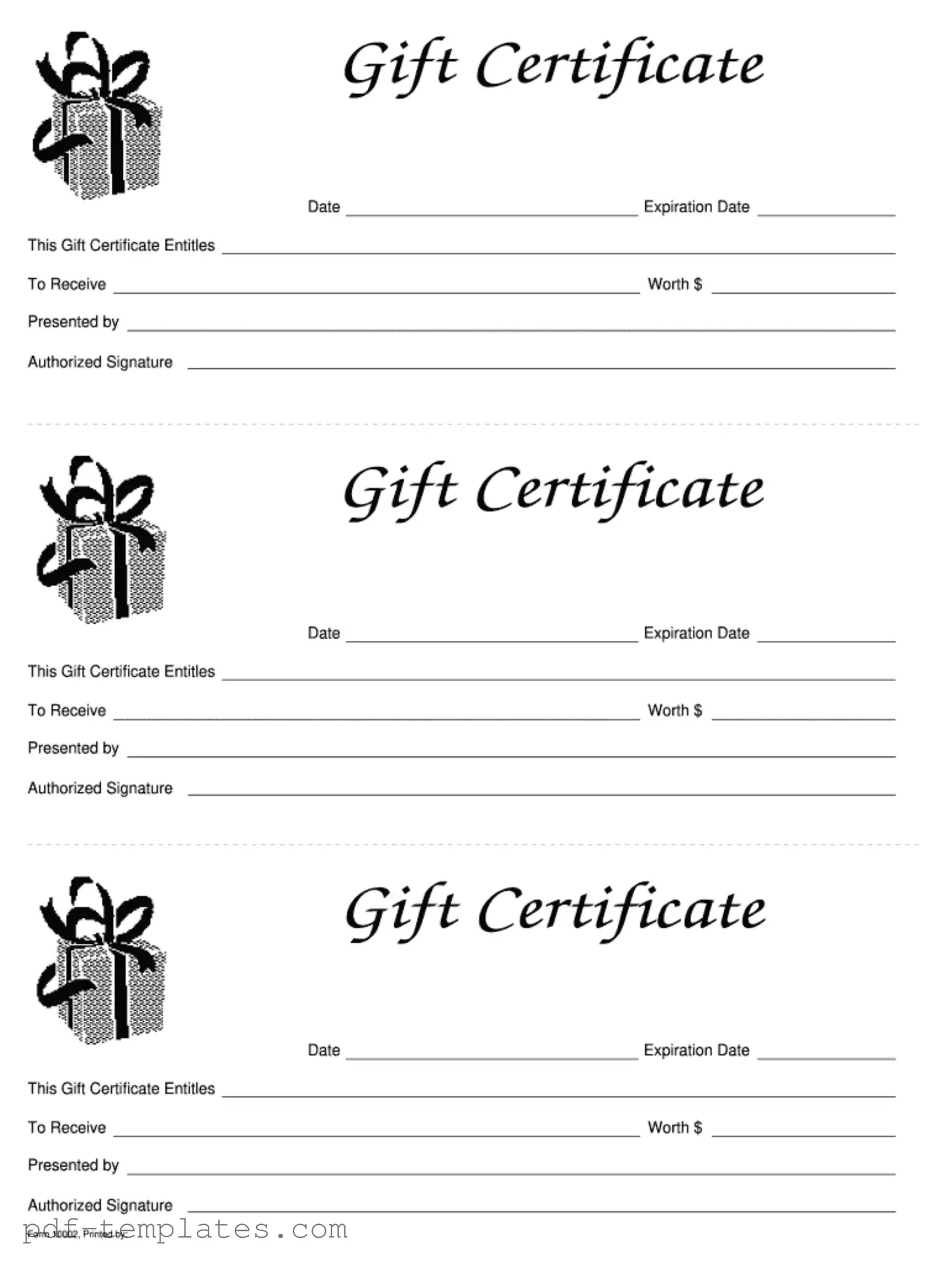The Gift Certificate form shares similarities with a Voucher. Both documents serve as proof of pre-paid services or products. A voucher can be used in various settings, such as restaurants or retail stores, allowing the holder to redeem it for specific goods or services. Like a gift certificate, a voucher typically has a monetary value and may have restrictions on its use, such as expiration dates or specific terms of redemption. The main difference lies in the context; vouchers are often associated with promotional offers or discounts, while gift certificates are usually intended as gifts.
Another document comparable to the Gift Certificate form is a Coupon. Coupons offer discounts or special deals on products or services, much like gift certificates, which can be redeemed for a specific value. However, while a gift certificate represents a set amount of money that can be spent, a coupon usually provides a percentage off or a specific dollar amount off a purchase. Both documents encourage consumer spending, but coupons often have more limitations regarding their use, such as minimum purchase requirements or specific expiration dates.
A Loyalty Card is also similar to a Gift Certificate form. Loyalty cards reward customers for repeat business, allowing them to accumulate points or credits that can be redeemed for discounts or free items. While gift certificates provide a one-time value, loyalty cards promote ongoing customer engagement and repeat purchases. Both serve as incentives for consumers, but loyalty cards typically require ongoing interaction with a business, whereas gift certificates can be given as a one-time gift without any further obligation.
Finally, a Membership Card can be likened to the Gift Certificate form. Membership cards often grant access to exclusive services or discounts, similar to how a gift certificate provides a monetary value for products or services. Both documents represent a form of value exchange, but membership cards usually require an upfront fee or ongoing payments, while gift certificates are typically purchased as a standalone item. Both encourage customer loyalty and engagement, but they operate under different frameworks of value and access.
